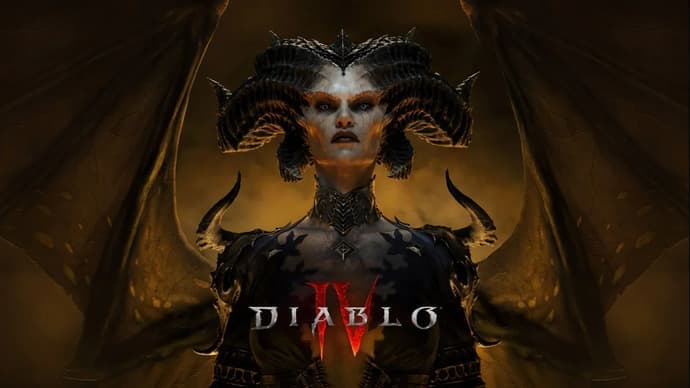
Game intel
Diablo 4
With Mephisto’s attention turned towards grander goals, Belial seizes the opportunity to make Sanctuary his thrall
After spending over 60 hours diving into Diablo 4 across both my desktop PC and Steam Deck (OLED), I can tell you: finding the perfect settings is almost as tricky as tackling Lilith herself. I went from frame drops in hellish mob fights to buttery-smooth exploration, all through tweaking options most guides barely mention. If you’re tired of stutter or subpar visuals, or just want to hit the sweet spot between looks and performance, this guide will get you there-whether you’re on a beefy PC or the Steam Deck’s limited hardware.
Diablo 4 is all about those bombastic battles and gloomy environments. But here’s what they don’t tell you: Every slider, from Texture Quality to Shadow Quality, can make or break your experience-not just in eye candy, but in frame drops and load times. Especially since The Sins of the Horadrim season, I found the default settings often missed the mark, either pushing my GPU too hard or leaving too much performance untapped. With my configs, I routinely hit 200+ fps on PC (RTX 4070, i7-11700F) and a stable 40-60fps on Steam Deck.
Alt + R; Steam Deck Quick Access Menu)Optional: A little patience for restarting the game after heavy preset changes (especially with ray tracing—see my warnings below).
I started from the default “High” preset, then toggled advanced settings based on real-time FPS drops in towns and world bosses. Here’s what finally worked to give me jaw-dropping visuals and consistently high frames at 1440p:
Options → Graphics.
Why these work: I focused on “bang for your buck” settings. Shadows, reflections, and texture quality impact visuals the most, while FSR/DLSS settings are free FPS. I tested Ultra and Ray Tracing—not worth the frame rate hit versus the minimal visual upgrade, unless you have a 4090 or equivalent.

Texture Quality or Water Simulation Quality to Medium.Physics and Particle Quality to Medium. This fixed “Rubber-banding” during world boss fights on my i7-it was a CPU issue, not GPU.Applying these changes and restarting the game after large preset switches takes about 2-3 minutes. If everything’s worked, you’ll see your FPS jump (check with the overlay) and your character will look crisp—no blurry edges or slow texture loads while riding into Kyovashad.
The Steam Deck (OLED) blew me away with how well it runs Diablo 4—provided you don’t just stick to “default” and call it a day. I played several full story acts docked, undocked, and even during commutes. These settings squeezed a consistent 40-50fps in mobs, 60 in dungeons, and kept battery life at about 3 hours on LCD/5+ hours on OLED:
Options → Graphics.
Why these work: The Steam Deck has a pretty decent APU, but it’ll choke on high shadow or geometry settings. FSR on Balanced mode keeps visuals crisp and still very playable—the jump to Quality is subtle and not always worth the FPS dip.
If you notice the Deck’s fan ramping up loudly (it gets hot during busy city sections), try toggling Shader Quality or Clutter Quality to Low. In my case, dropping reflection quality also bought back a few precious minutes of battery.

Alt + R (Nvidia overlay) or CTRL + SHIFT + O (AMD Radeon overlay) for FPS/VRAM stats in-game.… → Performance Icon, set overlay to “Medium” or “Detailed” to show live FPS/battery stats.Don’t make my mistake of trusting the “feeling” of smoothness—always verify FPS after changing settings, especially post-patch or after a new driver update. Diablo 4 sometimes stealthily reverts a few options with major updates, and I once played for an hour at 30fps before realizing it.
I tested Diablo 4 from both an older HDD and an NVMe SSD and the difference is night-and-day. Load screens on HDD can be 2-3x longer; using an SSD also helped texture streaming (no more blurry act intros or invisible NPCs). If you’re on Steam Deck, the internal SSD is great, but a high-speed microSD works too (just expect 2-3 seconds longer loads).
Fog Quality and Screen Space Reflections to Off, and reduce Render Scale to 80%. This nets 25+ FPS, but everything will look much less spectacular.If you follow these settings and tips, you’ll dodge the worst frame drops and enjoy those bloody, beautiful vistas without compromise—no matter your rig. Whether you’re fine-tuning for a midnight grind on the Deck or going all-in on ray tracing, experiment a bit, monitor closely, and remember that every system is unique. And, most importantly, don’t make the rookie mistake of ignoring driver or patch updates—they can rewrite the rules overnight. May your loot be plentiful and your frame times low!
Get access to exclusive strategies, hidden tips, and pro-level insights that we don't share publicly.
Ultimate Guide Strategy Guide + Weekly Pro Tips